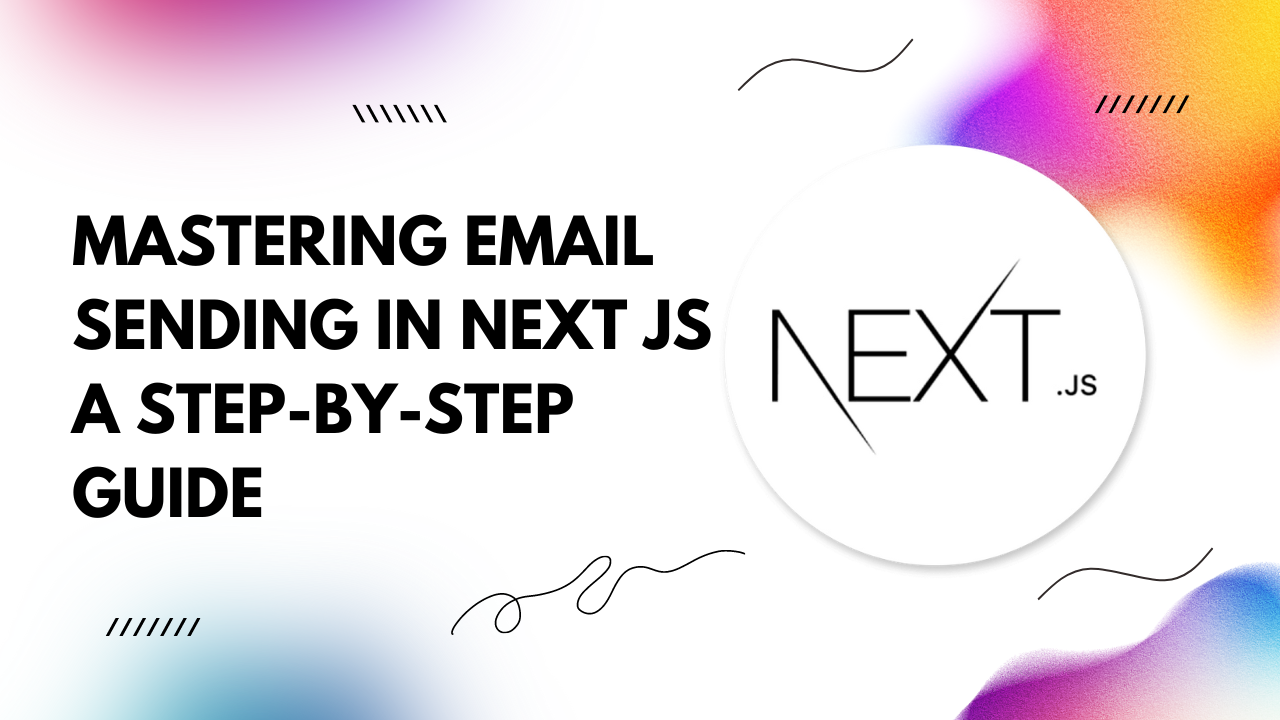In the dynamic world of web development, Next.js stands out as a powerful framework for building React applications. One often overlooked aspect of web applications is email functionality. Whether it's for user notifications, newsletters, or transactional emails, sending emails efficiently is crucial. In this guide, we'll delve into how to seamlessly integrate email sending capabilities into your Next.js application, covering each step from setup to sending.
Setting Up React Email:
To kickstart our journey, we need a reliable library for handling emails in our Next.js application. For this purpose, we'll utilize the 'nodemailer' package, a popular choice among developers for its simplicity and versatility. Begin by installing nodemailer using npm or yarn:
Once installed, you can import nodemailer into your Next.js application and configure it with your email service provider's credentials.
Creating an Email Template:
Crafting visually appealing and informative email templates is essential for effective communication with your audience. Next.js simplifies this process by allowing us to create React components as email templates. You can design your email template using JSX just like you would with any other React component, incorporating dynamic content where necessary.
// Example EmailTemplate.js
import React from 'react';
const EmailTemplate = ({ message }) => {
return (
<div>
<h1>Welcome to Our Newsletter!</h1>
<p>{message}</p>
</div>
);
};
export default EmailTemplate;
Previewing Emails:
Ensuring that your emails appear as intended across different devices and email clients is crucial. Next.js provides a convenient way to preview your emails during development. You can create a dedicated page or route within your Next.js application to render and preview the email templates.
Styling Emails:
Styling emails can be challenging due to limited CSS support in some email clients. However, Next.js allows you to leverage CSS-in-JS solutions like styled-components or inline styles to ensure consistent styling across various email clients.
// Example EmailTemplate.js
import React from 'react';
import styled from 'styled-components';
const StyledEmail = styled.div`
font-family: Arial, sans-serif;
color: #333;
`;
const EmailTemplate = ({ message }) => {
return (
<StyledEmail>
<h1>Welcome to Our Newsletter!</h1>
<p>{message}</p>
</StyledEmail>
);
};
export default EmailTemplate;
Sending Emails:
Finally, it's time to send out your meticulously crafted emails. Utilizing nodemailer, you can easily send emails from your Next.js application. Whether it's triggered by user actions or scheduled tasks, sending emails programmatically becomes a seamless process.
// Example email sending function
const sendEmail = async () => {
// Nodemailer configuration
let transporter = nodemailer.createTransport({
service: 'gmail',
auth: {
user: 'your-email@gmail.com',
pass: 'your-email-password'
}
});
// Email content
let mailOptions = {
from: 'your-email@gmail.com',
to: 'recipient@example.com',
subject: 'Welcome to Our Newsletter!',
html: '<p>Your email content goes here.</p>'
};
// Sending the email
await transporter.sendMail(mailOptions);
console.log('Email sent successfully!');
};
With these steps, you've unlocked the power of sending emails in your Next.js application. Whether you're sending newsletters, notifications, or transactional emails, Next.js provides the tools you need to streamline the process and engage with your audience effectively. Happy coding!
